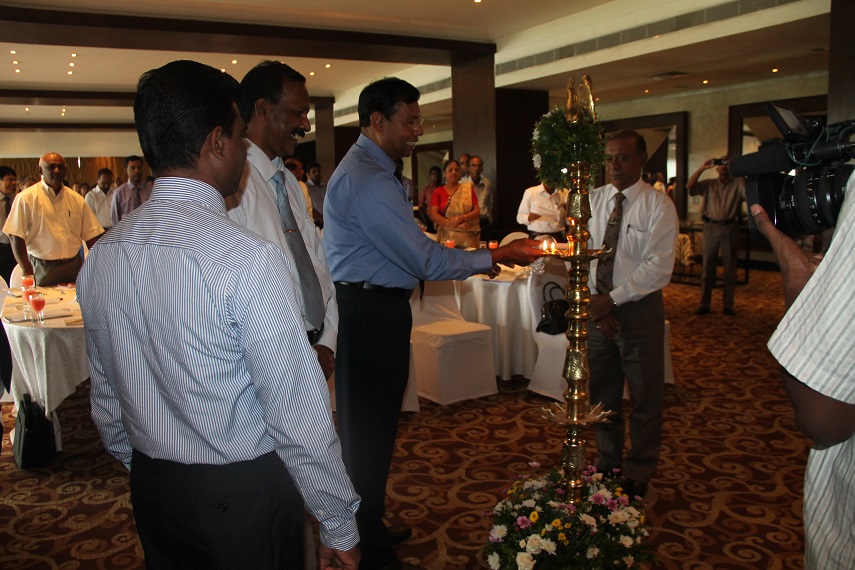Stakeholders pledge to sustainably manage lagoons in Sri Lanka
The 84 lagoons located along the 1,338 km of Sri Lanka coastline were known to be very productive and resilient. However, due to natural and human influences the productive nature of lagoons is affected by environmental pollution, carrying capacity issues and climate change impacts.

Dr Ananda Mallawatantri, Country Representative, IUCN Sri Lanka lighting the traditional oil lamp
Photo: Kumudini Ekaratne (IUCN Sri Lanka)
Acknowledging the urgent and timely need to address such issues as well as the potential of the lagoons to increase fish production and thereby improve the livelihoods of coastal communities, the Ministry of Fisheries and Aquatic Resources Development partnered with IUCN to develop and implement a comprehensive, multi-stakeholder and ecosystem-based approach towards the sustainable lagoon management in line with Blue Economy principles. The two key entities within the Ministry, namely the Dept. of Fisheries and National Aquatic Resources Research and Development Agency (NARA), played a key role in supporting IUCN to develop the initial concept.
To validate the concept and provide a platform for key stakeholder agencies to share knowledge and experience on the lagoon ecosystems management, the Ministry, in collaboration with IUCN Sri Lanka Country Office, held a stakeholder consultative workshop titled Empowered Coastal Lagoon Communities, on 23 June 2016 at the Water’s Edge, Battaramulla. This workshop was graced by the Hon. Mahinda Amaraweera, Minster of Fisheries and Aquatic Resources Development.
Welcoming the participants Mrs. W.M.M.R Adhikari, Secretary, Ministry of Fisheries and Aquatic Resources Development discussed the role and potential of the Lagoon Management Unit that has already been established at the Ministry to safeguard this important ecosystem. She added that Universities can be empowered to undertake research related to lagoon systems, and encouraged the multiple agencies present to collaborate in the sustainable lagoon development process.
Dr Jayampathy Samarakoon, a leading scientist in coastal ecology briefed the participants on changing lagoon ecosystems: opportunities, limitations and risks. Lagoons which come under the purview of the Forest and Coast Conservation and Coastal Resource Management Departments, occupy 3% of the land area in Sri Lanka and make a significant contribution to the coastal economy.
Speaking on the topic 'Optimising development opportunities through science and partnerships', Dr Ananda Mallawatantri, Country Representative of IUCN Sri Lanka, highlighted the value of thinking short and medium to long-term. He outlined a framework that can support multi-stakeholder participation in lagoon development that facilitates the work of government agencies, universities, non-government agencies involved in livelihoods, research entities, media, and different types of private sector groups and thereby implementing a comprehensive management system where students also play a key role.
Participants further discussed the concept proposed in six groups: Policies/Regulations; River basin and coastal processes; Lagoon resource system – interactions and outcomes; Resource users including entities producing direct and indirect impacts; Resource units and their values; and Governance (decision-making). These multi-disciplinary groups reported back with recommendations and potential contributions towards achieving the shared goal of sustainable development of lagoons while enhancing resilient livelihoods and minimising external risks such as climate change induced sea level rise, floods and storm surges.
The 92 workshop participants represented five ministries, 31 government agencies, seven international organisations, 11 universities and four NGOs.
